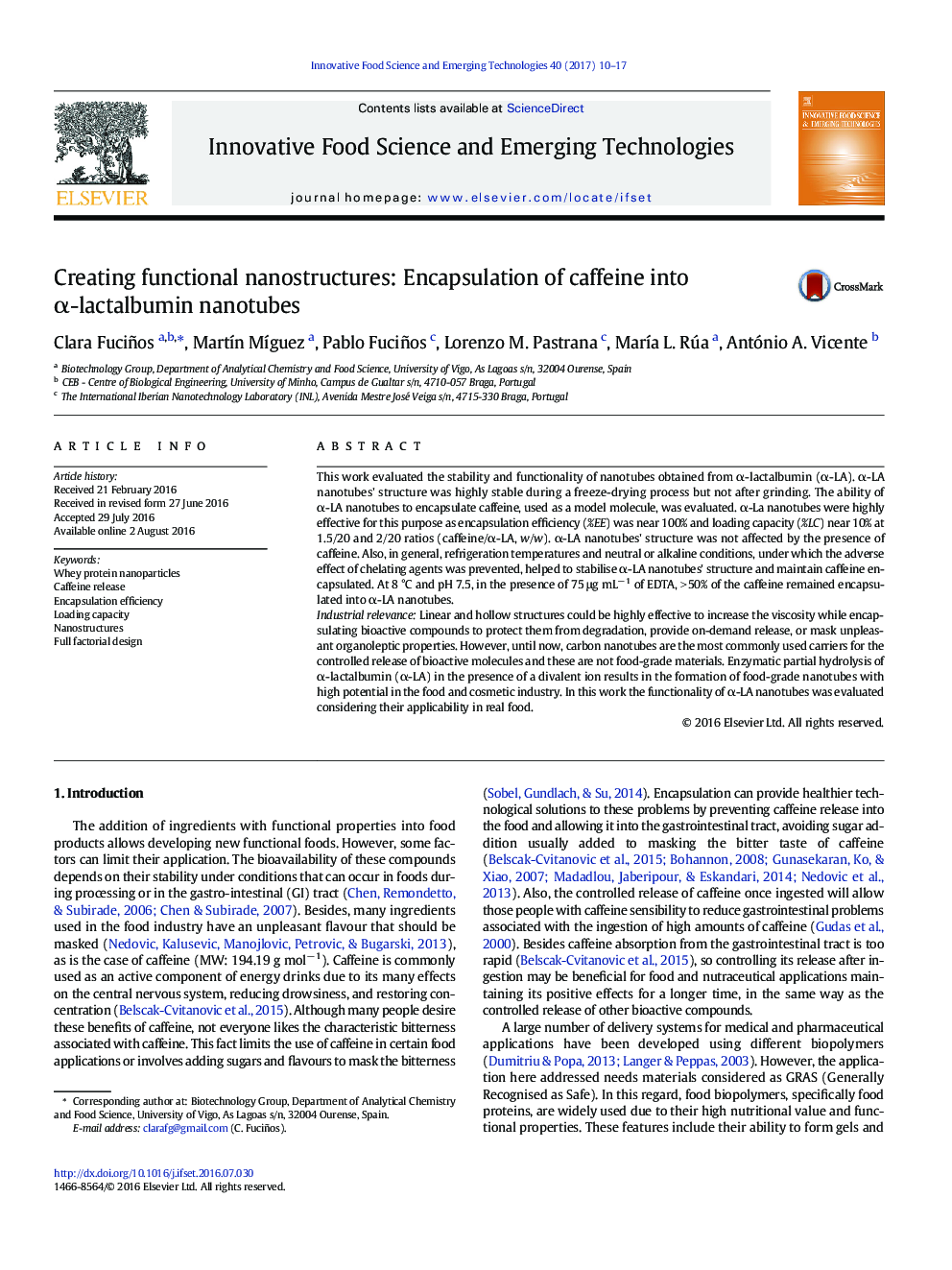| کد مقاله | کد نشریه | سال انتشار | مقاله انگلیسی | نسخه تمام متن |
|---|---|---|---|---|
| 5521792 | 1545528 | 2017 | 8 صفحه PDF | دانلود رایگان |

- The stability and functionality of α-lactalbumin nanotubes were assessed.
- α-LA nanotubes synthesised in the presence of Mn2 + were highly stable during freeze-drying.
- α-LA nanotubes were very efficient in caffeine encapsulation.
- %EE and %LC of caffeine were around 100% and 10% respectively.
- Low temperature and high pH prevented caffeine release from α-LA nanotubes.
This work evaluated the stability and functionality of nanotubes obtained from α-lactalbumin (α-LA). α-LA nanotubes' structure was highly stable during a freeze-drying process but not after grinding. The ability of α-LA nanotubes to encapsulate caffeine, used as a model molecule, was evaluated. α-La nanotubes were highly effective for this purpose as encapsulation efficiency (%EE) was near 100% and loading capacity (%LC) near 10% at 1.5/20 and 2/20 ratios (caffeine/α-LA, w/w). α-LA nanotubes' structure was not affected by the presence of caffeine. Also, in general, refrigeration temperatures and neutral or alkaline conditions, under which the adverse effect of chelating agents was prevented, helped to stabilise α-LA nanotubes' structure and maintain caffeine encapsulated. At 8 °C and pH 7.5, in the presence of 75 μg mLâ 1 of EDTA, > 50% of the caffeine remained encapsulated into α-LA nanotubes.Industrial relevanceLinear and hollow structures could be highly effective to increase the viscosity while encapsulating bioactive compounds to protect them from degradation, provide on-demand release, or mask unpleasant organoleptic properties. However, until now, carbon nanotubes are the most commonly used carriers for the controlled release of bioactive molecules and these are not food-grade materials. Enzymatic partial hydrolysis of α-lactalbumin (α-LA) in the presence of a divalent ion results in the formation of food-grade nanotubes with high potential in the food and cosmetic industry. In this work the functionality of α-LA nanotubes was evaluated considering their applicability in real food.
Journal: Innovative Food Science & Emerging Technologies - Volume 40, April 2017, Pages 10-17